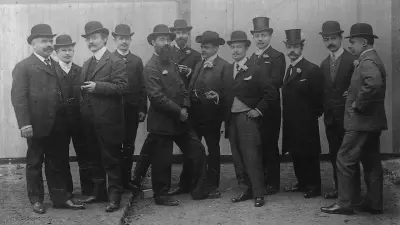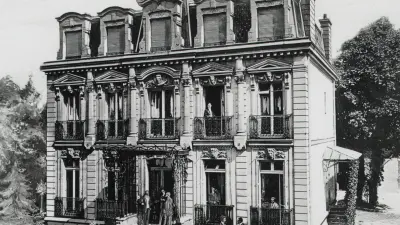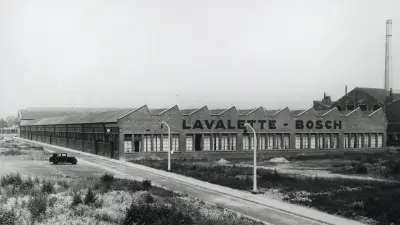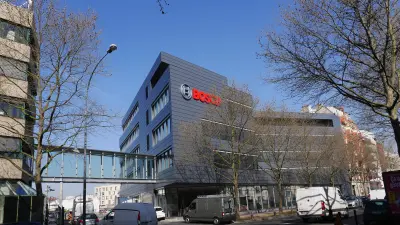Premiere in Paris
Bosch produces outside Germany for the first time

Paris Motor Show 1905: Bosch representatives from across Europe traveled to this major event. The company founder himself arrived from Stuttgart.
But when the group gathered for a photograph, the occasion that brought the people together represented a much more important step in the company’s history. The French Bosch representative, the Compagnie des Magnétos Simms-Bosch, had invited the German guests to the opening celebration for its new factory in Rue Violet in Paris.
It marked the start of the first Bosch production operation outside Germany. For the first time, magnetos were to be manufactured under a Bosch patent, but outside the company’s Stuttgart plants.

Restructuring and expansion

In June 1906, after separating from business partner and co-eponym Frederick Simms Bosch became the sole owner of the company and factory in Paris. Bosch began to restructure the French subsidiary under the leadership of Hermann Fellmeth and Max Rall, who had accompanied the German company’s French forays. In 1907, it founded the Société des Magnétos Bosch in Paris.
The following years saw fast business growth. Next to Great Britain and Germany, France was one of Europe’s biggest markets for automotive vehicles and supply. And thanks to the high quality of its products, Bosch had assumed a prominent position among ignition suppliers.
In 1909, the Compagnie des Magnétos Bosch opened a sales office for southern France in Lyon, and the head office in Paris moved into bigger offices in 1910. At the same time, management and production were shifted to one site located in Rue Théophile Gautier in Paris.
A preliminary end
When the first world war broke out in August 1914 and pitted Germany and France against each other this put a preliminary end to the success story of the Compagnie des Magnétos Bosch. The sales office was put under the control of the French government, and the factory was expropriated immediately, a fate that befell the sales office itself at the end of the war in 1918.
A French businessman, Jean Péan, acquired the business, including the rights to the Bosch brand. Bosch contacted Péan at the beginning of the 1920’s, making him his representative for Bosch products in France. The wounds of the war were too deep to set up German businesses in France.
A new start and a Déjà vu
At the end of the 1920’s, after German-French relations had warmed significantly — in part because of the determined efforts by Robert Bosch to promote friendship between the two people — Bosch was able to pick up where it had left off in France. In 1927, Bosch managed to repurchase the rights it had lost and resume the management of its French sales office. Production, however, had stood still and could not be resumed until Bosch entered a cooperative partnership with the French company Lavalette in 1928. The business partners chose St. Ouen as the location for a factory to produce automotive supplies that were marketed under the name Lavalette-Bosch.
Once again, geopolitics foiled all these efforts. At the end of the 1930s, Bosch withdrew from the joint venture. And with the second world war, the company again lost all its possessions in France.

Focusing on France
With the foundation of the European Economic Community (EEC) – the precursor of today’s European Union – in 1957 Bosch began to focus more on its western neighbor France. In the 1950s, Bosch was able to re-establish business relations with French contacts that had been built up between the two world wars. In 1962, the production company Les Constructeurs Associes was founded in tandem with several French partners, becoming a wholly owned Bosch company in 1964. From 1966, after merging with the sales company Robert Bosch S.A., the new company traded under the name Robert Bosch (France) S.A.
The French regional subsidiary greatly expanded its business in the years that followed, setting up new operations and acquiring companies. France became the second most important market for the Bosch Group after Germany, and remained so until well into the 1980s. In 1983, Robert Bosch (France) S.A. became the largest German employer in France.

Another opening
The plants in France are now a firm part of the global Bosch manufacturing network. The French regional company has more than 20 locations throughout France. And at the end of March 2017, it celebrated another inauguration, like in 1905. In St. Ouen, on the outskirts of Paris, the new headquarters of Robert Bosch (France) SAS was be officially opened.

Author: Christine Siegel
